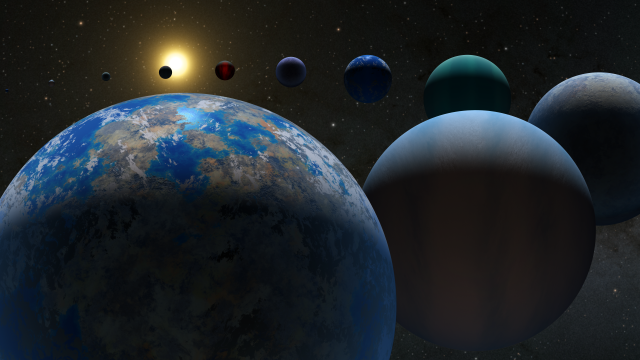Barely a week goes by without learning about a newly discovered planet circling some nearby, but still quite distant, star. It wasn’t until the 1990s that scientists had compelling evidence that such exoplanets existed, and the pace of their discovery since then has been astonishing. Well over 5,000 are now confirmed, some of which are circling their parent stars in orbits that might allow the existence of liquid water and biological life. Almost every time we learn of one of these potentially habitable planets, people ask: “Can we go there?”
The best answer is, “Maybe!” What we know about physics and the laws of nature tell us that it might just be possible.
The most immediate challenge is posed by the distances involved. Proxima Centauri, the star closest to the Earth, is an astonishing 25,300,000,000,000 miles (about 39,900,000,000,000 kilometers) away. To put this in perspective, the distance from the Sun to the Earth is 93,000,000 miles (149,598,000 kilometers)—so far that it takes light about 8 minutes to travel here from the Sun. Proxima Centauri is 268,770 times farther away, taking light over 4 years to cover this distance. Using today’s chemical rockets and attempting every trick in the book to boost a spacecraft’s speed, undertaking such a journey in the near future would require well over 70,000 years. And that is to the nearest star! Nearly all of those other pinpoints of light in the night sky are yet farther—much farther—away.
Simply getting there is not the only challenge. A spacecraft would also have to survive the cold of deep space, far away from the heat and light of the Sun, requiring a long-lived power system to keep the craft from freezing and losing navigation along the way. It would also have to be able to communicate with Earth during the trip and to report its findings upon arrival—otherwise, what would be the point in going in the first place? Communicating with the Voyager spacecrafts, intrepid ships launched in 1977 that are now farther into deep space than any other craft (a little over 130 times the distance between the Earth and sun—still a far cry from 268,770 times!), requires the use of antennas 230 feet in diameter as part of what is known as the Deep Space Network. If the Voyagers’ power supplies weren’t reaching their end of useful life, then they would soon be too distant for even these massive antennas to hear their radio messages.
And then there is the problem of sending people. Launching a small robotic spacecraft to a nearby star will be difficult. Because sustaining human life requires a lot of mass, sending a ship carrying people makes the space propulsion challenge significantly more difficult. If we consider the International Space Station, for example, keeping a crew of 4–6 people alive in Earth’s orbit requires a spacecraft that is 357 feet long and weighs over 925,000 pounds. Imagine what it would take to build a ship for a thousand people to take a multi-year, or more likely a multi-century, journey across the vast nothingness between the stars. Lest we forget, there will also be major problems posed by the long-duration exposure to the radiation and weightless environments of deep space. Human bones and muscles will degrade, tissues will be damaged by the passage of high energy cosmic rays, and overall health will likely decline without intervention of some kind.
Then there is the problem of what awaits them at the destination. The likelihood of finding another planet immediately hospitable to Earth life is approximately zero. Some worlds will be too hot, others too cold. Some will have atmospheres close to that of the Earth but with different levels of the elements required to make them breathable to us. Others will have atmospheres so deadly that settlement will be impossible. Whatever we find will have to be modified for Earth life to survive, let alone thrive. Not to mention the huge ethical challenge posed should we find a world with already-existing life!
The good news is that scientists and technologists around the world look at the many engineering problems not as barriers but as challenges to be overcome. Within the known laws of nature, they are proposing solutions that may be beyond our current technological capabilities but that are clearly not impossible. It is the ethical challenges that may turn out to be even more daunting:
- How shall the crew aboard an interstellar starship be governed during centuries-long voyages?
- What about the children of the settlers who are born along the way? They didn’t volunteer to spend their lives in deep space aboard a ship!
- Shall we genetically modify the travelers to make the journey possible? What of their offspring?
- When the ship reaches a planet circling another star, will they have the right to begin modifying it to make it habitable for Earth life? What if the world already has life that has environmental requirements different and incompatible with Earth life?
Traveling to the stars will not be easy, and nature will erect roadblocks at nearly every turn—but it is possible. Are we up to the challenge?
Les Johnson is space technologist at NASA. His books include A Traveler’s Guide to the Stars (Princeton), Graphene: The Superstrong, Superthin, and Superversatile Material That Will Revolutionize the World (Prometheus), and the science fiction novel, Saving Proxima (Baen Books). He lives in Madison, Alabama.

